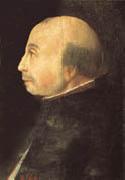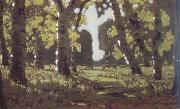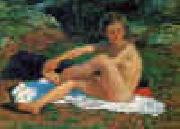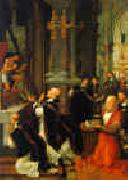| |
|
Xiamen Oil Paintings, Wholesale Direct!
|
|
100% hand painted, 100% cotton canvas, 100% money back if not satisfaction. |
|
|
|
|
ART WORKS INDEX
A
B
C
D
E
F
G
H
I
J
K
L
M
N
O
P
Q
R
S
T
U
V
W
X
Y
Z
|
|
ARTISTS INDEX
A
B
C
D
E
F
G
H
I
J
K
L
M
N
O
P
Q
R
S
T
U
V
W
X
Y
Z
|
|
|
|
|
|
 |
Bernardino india
|
|
Italian Emilian painter , 1528-1590
was a painter of the late Renaissance, born and mainly active in Verona. He is said to have trained with Domenico Riccio. He collaborated with Michele Sanmicheli in the Canossa palace and Pellegrini chapel in San Bernardino of Verona. He collaborated with Felipe Brusasorci, Domenico's son in frescoes at Palazzo Fiorio Della Seta. He decorated Palladian villas such as Villa Pojana, Villa Foscari (also known as La Malcontenta) where Giovanni Battista Zelotti also worked, and the Palazzo Thiene in Vicenza. Orlando Flacco completed his most extensive work for the Sala Maggior di Consiglio in Verona.
|
|
|
|
 |
Arkhip Ivanovich Kuindzhi
|
|
Russian Painter, 1842-1910
Ukrainian painter, active in Russia. Initially self-taught as an artist, he twice failed the St Petersburg Academy's entrance examination, despite coaching by the marine painter Ivan Aivazovsky. In 1868, however, he was accepted as an external student. He persevered against conservative prejudice and poverty throughout his early career, supplementing his income by retouching photographs. In his early landscape paintings he often sought to capture seasonal moods, as in Autumn Mud (1872; St Petersburg, Rus. Mus.). A more human focus, however, is noticeable after 1874, when he joined the travelling exhibitions society the WANDERERS: the village houses dominate the landscape setting in Evening in Ukraine (1878; St Petersburg, Rus. Mus.). Kuindzhi's principal interest, however, was in lighting, and he obtained striking effects by using vivid colours, chiaroscuro contrasts and simple but cleverly conceived designs. Spectacular paintings, such as the Birch Grove (1879; Moscow, Tret'yakov Gal.), greatly moved contemporary viewers. Through years of experimentation, Kuindzhi developed a highly original technique, which he applied to an increasingly typical, at times almost visionary, treatment of subjects such as snow-covered mountains and moonlight (e.g. Elbnis: Moonlit Night, 1890-95; Moscow, Tret'yakov Gal.). Due to imperfections in the paints he used, many of his canvases soon darkened.
|
|
|
|
 |
Alexander Ivanov
|
|
1806-1858
Russian Alexander Ivanov Galleries
was a Russian painter who adhered to the waning tradition of Neoclassicism but found little sympathy with his contemporaries.
Ivanov studied together with Karl Briullov at the Imperial Academy of Arts under his father, Andrey A. Ivanov. He spent most of his life in Rome where he befriended Gogol and succumbed to the influence of the Nazarenes. He has been called the master of one work, for it took 20 years to complete his magnum opus, The Appearance of Christ before the People (1837-57).
It was for the next generation of art critics to do him justice. Some of the numerous sketches he had prepared for The Appearance have been recognized as masterpieces in their own right. Although Ivanov's major painting is a gem of the Tretyakov Gallery, the most comprehensive collection of his works can be viewed at the Russian Museum in St Petersburg.
|
|
 |
Adriaen Isenbrandt
|
|
Flemish Northern Renaissance Painter, ca.1500-1551
There are only a few documentary records of his life, and some mentions in literature from his lifetime or soon after, but he cannot be documented as the creator of any surviving work; everything else consists of hypothesis. It is possible that he was born in Haarlem or even in Antwerp about 1490. It is not known where or with which painter he served his apprenticeship.
He is named for the first time in 1510, when he came to Bruges and bought his burghership. In November of the same year he already became master in the painters?? Guild of St. Luke and the goldsmiths?? guild of St. Elooi. He was later elected nine time a deacon and twice the governor of the guild.
Soon he had an important workshop, probably in the Korte Vlaminckstraat in Bruges. This was close to the workshop of Gerard David, at the Vlamijncbrugghe and the former workshop of Hans Memling. Bruges, at that time, was one of the richest towns in Europe. Rich traders and merchants ordered diptychs and portraits for personal use. Isenbrandt painted mainly for private clients. However, there were some paintings that were created without any particular commission. He had enough work to even put out work to other painters in Bruges, as a legal suit from 1534 by Isenbrandt against Jan van Eyck (not the famous one) for non-delivery of paintings he had ordered, demonstrates. He was also appointed the agent in Bruges of the painter Adriaan Provoost (son of Jan Provoost), who had moved to Antwerp in 1530. Contemporary sources therefore mention Isenbrandt as a famous and well-to-do painter.
He married twice, the first time with Maria Grandeel, daughter of the painter Peter Grandeel. They had one child. After her death in 1537, he married again in 1547 with Clementine de Haerne. This second marriage resulted in two daughters and a son. He also had an extramarital daughter with the innkeeper Katelijne van Brandenburch (who was at the same the mistress of his friend Ambrosius Benson).
When he died in 1551, he was buried alongside his first wife at the cemetery of the St. Jacob church in Bruges; his children inherited no less than four houses with surrounding property.
|
|
|
|
|
|
|
|
|
|
|
|
|
|
|
| Wholesale China Oil Painting Wholesale Oil Painting China Xiamen Portrait Reproduction on canvas Chinese Oil Painting Wholesale USA Oil Painting |
|
|
|
|
|